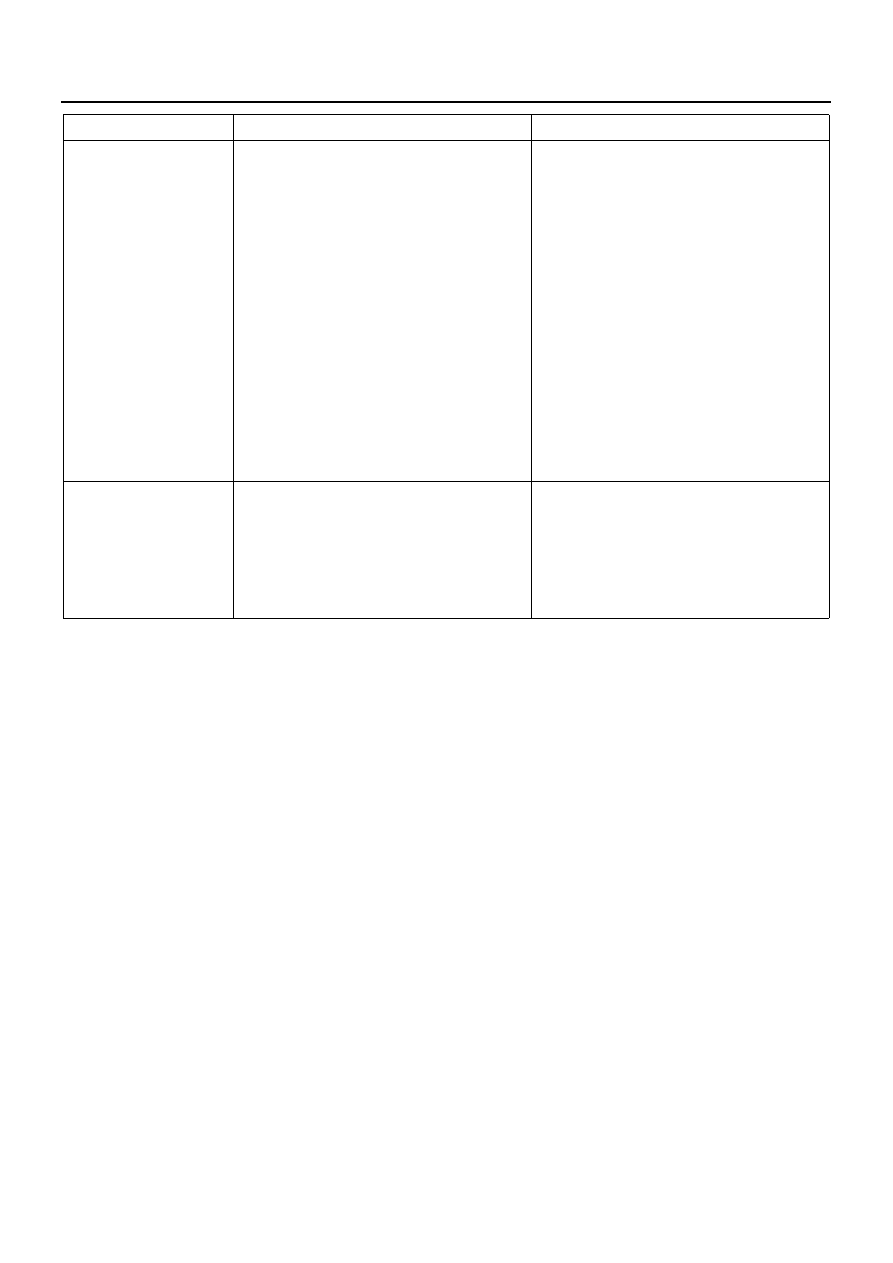Isuzu N-Series. Service manual - part 198

SERVICE INFORMATION 00-9
Notice:
• When the brake pedal is operated after the engine
is turned off and the oil pump stops, during a few
operations a fluid sound due to the flow of high-
pressure oil or a sound of movement by the charge
spool may be produced, but this sound is not ab-
normal; it merely indicates that boosting by the ac-
cumulator (accumulator operation) is proceeding
normally.
Also, a similar fluid sound is produced during quick
operation of the brake pedal even if the engine is
on, but this too is normal.
• If the pressure of the oil in the accumulator drops
with operation of the brake pedal after the engine
is turned off or when the engine has been off for a
long time, then immediately after the engine is
turned on, fluid sound during charge valve opera-
tion or switching sound when charging ends will be
produced, but this sound is not abnormal; it merely
indicates that the accumulator is being normally
charged.
Also, a similar charging operation sometimes oc-
curs and sound is sometimes produced when the
pressure inside the accumulator drops even when
the engine is on and charging has ended, due to
such causes as rapid operation of the brake pedal,
internal leakage that is too slight to affect brake
performance, or a change in temperature; this too
is normal.
• When the brake pedal is pressed strongly as far as
the booster full load region while the engine is on,
sometimes sound is produced by the flow of hy-
draulic oil discharged from the oil pump, but this is
not abnormal. Also, pressing the pedal in as far as
this booster full load region can cause a significant
increase in the oil temperature inside the oil pump
and can lead to a failure, so keep the pedal
pressed for no longer than 5 seconds.
Warning buzzer contin-
uously sounds
1. Faulty hydraulic booster assembly
• Faulty pressure switch
• Leakage inside the charge valve
• Confirm that the electric devices (pres-
sure switch, relay, buzzer, etc.) are
working correctly.
• If all are working correctly, pump the
brake pedal at least 10 times after turn-
ing the engine off to reduce pressure in
the hydraulic booster.
Start the engine, and release the park-
ing brake. Check to see if the alarm
stops within ten seconds (if it does, the
electrical devices are working properly).
• When testing the electrical devices, al-
ways keep your foot on the brake pedal
with just enough pressure to prevent
the vehicle from moving.
If the alarm does not stop, the hydraulic
booster assembly may have to be re-
placed.
Charge operation
remains in effect
1. Bad charge valve operation
• Bad valve switching operation
• Turn the engine on, and without press-
ing the brake pedal, check whether any
charging sound continues, such as the
sound of the fluid.
• If it continues and will not stop, replace
the hydro boost assembly as neces-
sary.
PROBLEM
POSSIBLE CAUSE
CORRECTION